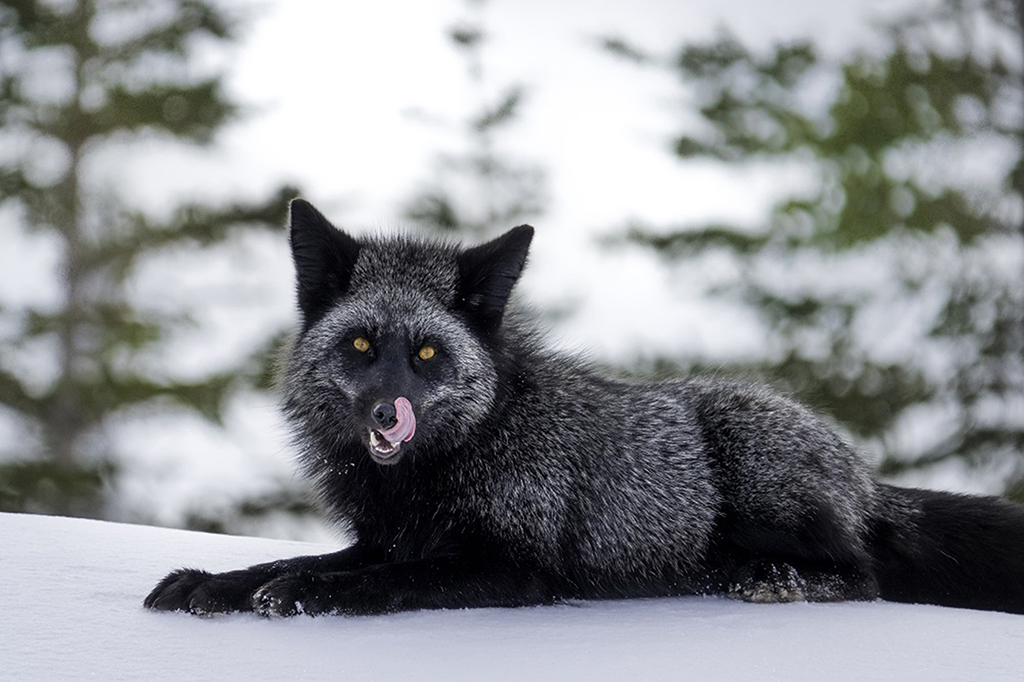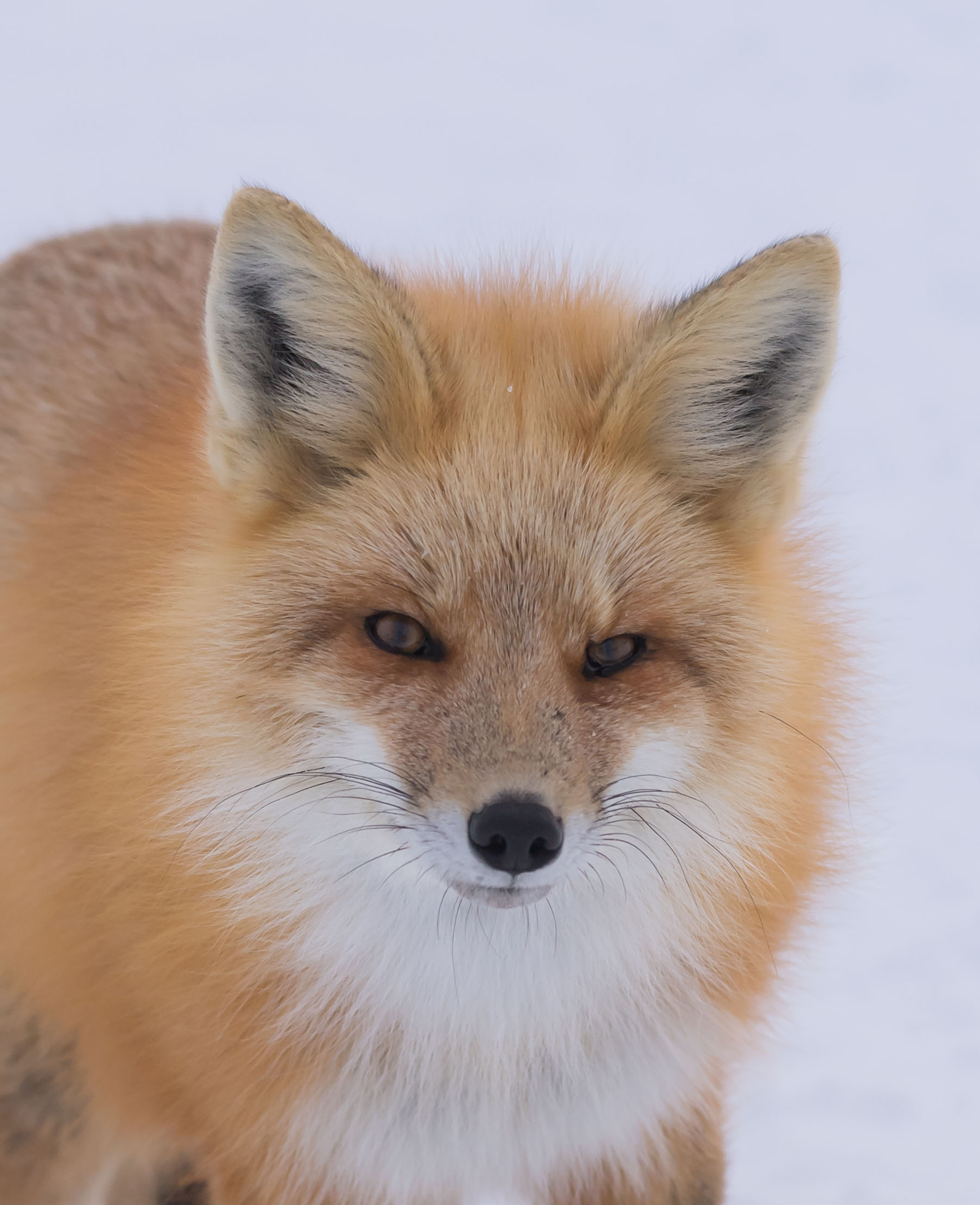Scientific name: Vulpes vulpes
Average length/height: 90-112 cm (35–44 in)
Average weight: 3.6-6.8 kg (8-15 lbs)
Characteristics
Red foxes appear as a mix of red and orange with white fur accenting their chest and under their neck. Their tails are tipped in white and their ears, paws and muzzle often have black accents. They can also develop white stockings on their legs.
Red foxes also come in dark colours and are known as silver foxes when displaying black hair with white tips. Their fluffy tails make up a third of their body length.
Territory/Geographical Locations
Red foxes are very prevalent in North America, Europe and Asia. Humanity has introduced them to North Africa and Australia, and they have started to expand their range there as well. They are found in every province and territory in Canada, making them one of the country’s most widespread populations. (HWW, n.d.)
Population & Reproduction
Male foxes are called dogs while the females are known as vixens. They typically form monogamous pair, and if they live in a warmer climate, will start breeding in December. In colder climates they’ll wait until mid-March when temperatures warm slightly. The young, or kits, are born after a short two month gestation and litters can be have up to 10 kits, with an average of five. (HWW, n.d.)
The global population of red foxes is stable.
Diet
Red foxes are omnivores, though most of their diet is made up of voles, mice, lemmings, rabbits, and other small mammals. They will also eat insects, berries and bird eggs or chicks and trout, if they can catch them. They also scavenge for remains left by other predators, reptiles, and garbage if living in an area populated by humans.










